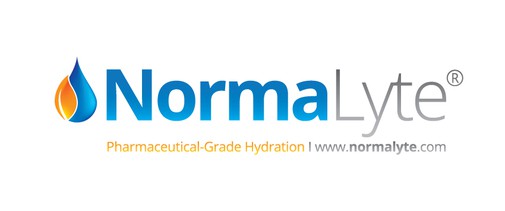



We appreciate our sponsors!
Platinum Sponsor

Gold Sponsor

Gold Sponsor

| Postural Orthostatic Tachycardia Syndrome (POTS)
Postural Orthostatic Tachycardia Syndrome (POTS) is a form of dysautonomia. POTS is a subset of orthostatic intolerance that is associated with the presence of excessive tachycardia on standing.1 The current diagnostic criteria for POTS is a heart rate increase of 30 beats per minute (bpm) or more, or over 120 bpm, within the first 10 minutes of standing.1,2,3,4 In children and adolescents, a revised standard of a 40 bpm or more increase has recently been adopted.4,5 POTS is often diagnosed by a Tilt Table Test, but if such testing is not available, POTS can be diagnosed with bedside measurements of heart rate and blood pressure taken in the supine (laying down) and standing up position at 2, 5 and 10 minute intervals.
While the diagnostic criteria focus on the abnormal heart rate increase upon standing, POTS usually presents with symptoms much more complex than a simple increase in heart rate. It is fairly common for POTS patients to have a noticeable drop in blood pressure upon standing, but some POTS patients have no change or even an increase in blood pressure upon standing.1 POTS patients often have hypovolemia (low blood volume) and high levels of plasma norepinephrine while standing, reflecting increased sympathetic nervous system activation.3 Many POTS patients also experience fatigue, headaches, lightheadedness, heart palpitations, exercise intolerance, nausea, diminished concentration, tremulousness (shaking), syncope (fainting), coldness or pain in the extremeties, chest pain and shortness of breath.1,3,4
Some patients have fairly mild symptoms and can continue with normal work, school, social and recreational activities. For others, symptoms may be so severe that normal life activities, such as bathing, housework, eating, sitting upright, walking or standing can be significantly limited.1,3 Physicians with expertise in treating POTS have described the functional impairment seen in POTS patients to the impairment seen in chronic obstructive pulmonary disease (COPD) or congestive heart failure.1 They note that while the symptoms are real and can severely limit a patients ability to function, POTS patients are too often misdiagnosed as having severe anxiety or panic disorder.1,3 Modern research has shown that POTS patients are similarly or even less likely to suffer from anxiety or panic disorder than the general public.3,5,6,7
History of POTS
The term “POTS” was coined in 1993 by a team of researchers from Mayo Clinic, led by neurologist Dr. Philip Low.8 However, POTS is not a new illness; it has been known by other names throughout history, such as DaCosta's Syndrome, Soldier's Heart, Mitral Valve Prolapse Syndrome, Neurocirculatory Asthenia, Chronic Orthostatic Intolerance, Orthostatic Tachycardia and Postural Tachycardia Syndrome.3 In the past, it was mistakenly believed to be caused by anxiety. However, modern researchers have determined that POTS is not caused by anxiety.2,6,7 It is caused by a malfunction of the patients autonomic nervous system. Thankfully, in the last 20 years, researcher have gained much more insight into imbalances of the autonomic nervous system.1
POTS researchers have classified POTS in various ways, such as “Primary” and “Secondary” POTS;1 “high flow” and “low flow” POTS;9 and also by the primary symptoms, to wit, hypovolemic POTS (POTS associated with low blood volume), partial dysautonomic POTS (“PD POTS” is associated with a partial autonomic neuropathy and is sometimes referred to as neuropathic POTS) and hyperandrenergic POTS (“hyper POTS” is associated with elevated levels of norepineprhine).1,3,4 From a practical point of view, many patients do not fit neatly within one of these classifications.
Who Develops POTS?
POTS can strike any age or gender, but it is most often seen in women of child bearing age (between the ages of 15 and 50).2 Men and boys can develop it as well, but approximately 75% to 80% of patients are female.2
What Causes POTS?
POTS is a heterogeneous (meaning it has many causes) group of disorders with similar clinical manifestations.1,4 POTS itself is not a disease; it is simply a cluster of symptoms that are frequently seen together. This is why the “S” in POTS stands for “Syndrome.” Since POTS is not a disease, it is fair to say that POTS is caused by something else. However, figuring out what is causing the symptoms of POTS in each patient can be very difficult, and in many cases, patients and their doctors will not be able to determine the precise underlying cause. When doctors cannot pinpoint the underlying cause of a patients POTS, it may be called Primary or Idiopathic POTS.1 Idiopathic simply means “of an unknown origin.”
There are several underlying diseases and conditions that are known to cause or be associated with POTS:
-Infections such as Mononucleosis, Epstein Barr Virus, Lyme Disease, extra-pulmonary Mycoplasma pneumonia and Hepatitis C;1,2,3,4,10,11
-Autoimmune Diseases such as Autoimmune Autonomic Neuropathy, Diabetes, Sjogren's Syndrome, Sarcoidosis and Lupus;1,3
-Ehlers Danlos Syndrome - a collagen protein disorder than can lead to joint hypermobility and “stretchy” veins;3,12
-Genetic Disorders/Abnormalities;3
-Amyloidosis;1
-Multiple Sclerosis;13
-Mitochondrial Diseases;14
-Mast Cell Activation Disorders;3
-Vitamin Deficiencies/Anemia;15,16
-Deconditioning;4
-Paraneoplastic Syndrome – rare small tumors of the lung, ovary, breast and pancreas that produce antibodies;1
-Trauma, pregnancy or surgery;1,2,3
-alcoholism, chemotherapy and heavy metal poisoning.1
Treatment
Each patient is different, and thus consulting with a physician who has experience in treating autonomic disorders is important. The most common treatments for POTS include increasing fluid intake to 2-3 liters per day, increased salt consumption to 3,000 mg to 10,000 mg per day (except in Hyperandrenergic POTS), wearing compression stockings, increasing the head of the bed (to conserve blood volume), reclined exercises such as rowing, recumbent bicycling and swimming, a healthy diet, avoiding substances that worsen orthostatic symptoms and finally, the addition of medications meant to improve symptoms.1,3 Many different medications are used to treat POTS, such as Fludrocortisone, Beta Blockers, Midodrine, Clonidine, Pyridostigmine, Benzodiazepines, SSRIs, SNRIs, Erythropoietin, or Octreotide.1,3 If an underlying cause of the POTS symptoms has been identified, treating the underlying cause is very important as well.
Prognosis
Currently, there is no cure for POTS, however researchers believe that a good percentage of patients will recover over time. Detailed long term follow up studies on the course of POTS are sparse. Doctors believe that most patients who develop POTS during puberty or adolescence usually recover by their mid teen to early 20s. Estimates are that about 50% of patients who have post-viral POTS will fully or almost fully recover within a two to five year period.1 With proper lifestyle and medical treatments, many patients will see a substantial improvement in their quality of life.1 If an underlying cause can be identified, and if that cause is treatable, the POTS symptoms may subside. While the prognosis is good for most patients, researchers have noted that some patients will not improve and may actually worsen over time.1 Aproximately 25% of POTS patients are disabled and unable to work.1
Sources
1. Postural Tachycardia Syndrome. Blair P. Grubb, Circulation. 2008; 117: 2814-2817.
2. National Institute of Health, Neurological Institute of Neurological Disorders and Stroke, Postural Tachycardia Syndrome Information Page.
3. The Postural Tachycardia Syndrome (POTS): Pathophysiology, Diagnosis & Management. Satish R Raj, MD MSCI, Indian Pacing Electrophysiol J. 2006 April-Jun; 6(2): 84-99.
4. Consensus statement on the definition of orthostatic hypotension, neurally mediated syncope and the postural tachycardia syndrome. Autonomic Neuroscience: Basic and Clinical 161 (2011) 46–48.
5. Postural tachycardia in children and adolescents: what is abnormal? Singer W, Sletten DM, Opfer-Gehrking TL, Brands CK, Fischer PR, Low PA, J Pediatr. 2012 Feb;160(2):222-6. Epub 2011 Oct 11.
6. Excessive heart rate response to orthostatic stress in postural tachycardia syndrome is not caused by anxiety; Masuki S, Eisenach JH, Johnson C et al. ? Journal of Applied Physiology 2006; 102: 1134-42.
7. Experimental induction of panic-like symptoms in patients with postural tachycardia syndrome; Khurana RK,?Clinical Autonomic Research 2006; 16: 371-7.
8. Idiopathic postural orthostatic tachycardia syndrome: an attenuated form of acute pandysautonomia. Schondorf R, Low PA; Neurology 1993 Jan;43(1):132-7.
9. Increased plasma angiotensin II in postural tachycardia syndrome (POTS) is related to reduced blood flow and blood volume. Stewart JM, Glover JL, Medow MS. Clin Sci (Lond). 2006 Feb;110(2):255-63.
10. Postural orthostatic tachycardia syndrome following Lyme disease. Kanjwal K, Karabin B, Kanjwal Y, Grubb BP; Cardiol J. 2011;18(1):63-6.
11. Postural Orthostatic Tachycardia Syndrome Associated With Mycoplasma pneumoniae. Kasmani, Rahil MD, MRCP; Elkambergy, Hossam MD; Okoli, Kelechi MD, MRCP; Infectious Diseases in Clinical Practice: September 2009 - Volume 17 - Issue 5 - pp 342-343.
12. Dysautonomia in the joint hypermobility syndrome. Gazit Y, Nahir AM, Grahame R, Jacob G. Am J Med. 2003 Jul;115(1):33-40.
13. Autonomic dysfunction presenting as postural orthostatic tachycardia syndrome in patients with multiple sclerosis. Kanjwal K, Karabin B, Kanjwal Y, Grubb BP. Int J Med Sci, 2010 Mar 11;7:62-7.
14. Autonomic dysfunction presenting as orthostatic intolerance in patients suffering from mitochondrial cytopathy. Kanjwal K, Karabin B, Kanjwal Y, Grubb BP. Clin Cardiol. 2010 Oct;33(10):626-9.
15. Iron insufficiency and hypovitaminosis D in adolescents with chronic fatigue and orthostatic intolerance. Antiel RM, Caudill JS, Burkhardt BE, Brands CK, Fischer PR. South Med J. 2011 Aug;104(8):609-11.
16. Autonomic function tests in cases of chronic severe anaemia. Nand N, Mohan R, Khosla SN, Kumar P. J Assoc Physicians India. 1989 Aug;37(8):508-10.
|
|





